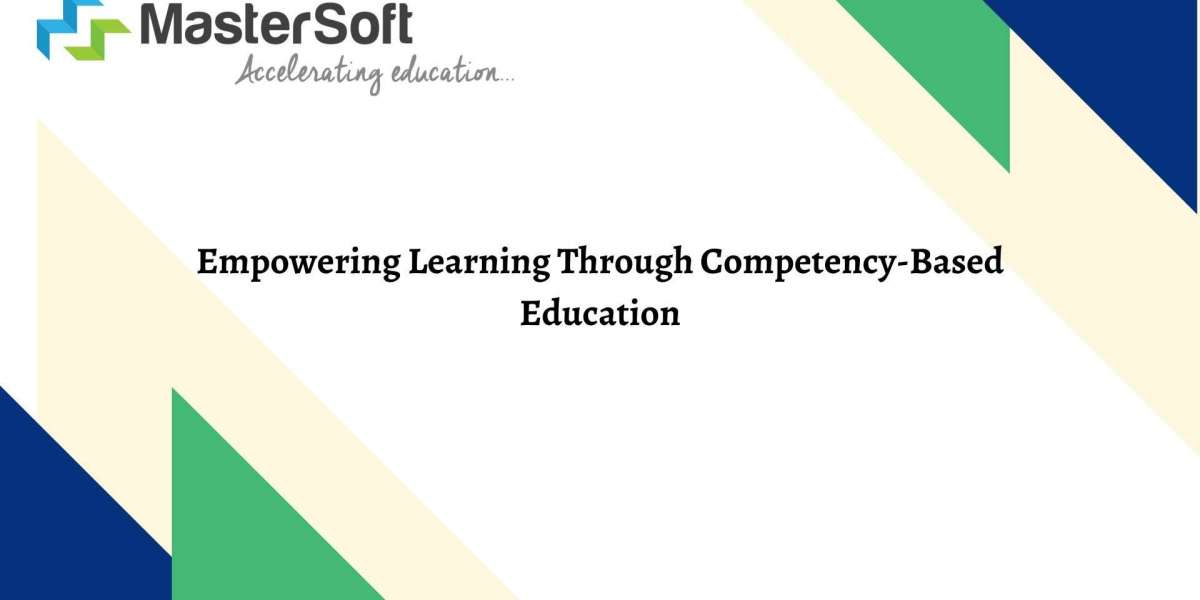Education has long been the cornerstone of personal and societal growth. However, traditional education systems often emphasize time-based progression over actual learning and mastery. Competency-Based Education (CBE) offers a transformative approach that focuses on students' mastery of skills and knowledge, tailoring the learning experience to individual needs and pacing. This approach is gaining traction as an effective way to prepare students for the complexities of the modern world.
What is Competency-Based Education?
Competency-Based Education is an educational model where students progress based on their ability to demonstrate mastery of specific skills or competencies, rather than on the amount of time spent in class. This model prioritizes outcomes over processes, ensuring that students truly understand and can apply what they have learned.
Key Principles of Competency-Based Education
1. Student-Centered Learning:
In CBE, the focus shifts from a one-size-fits-all curriculum to personalized learning paths. Students take an active role in their education, setting goals and working at their own pace to achieve them. This approach accommodates diverse learning styles and paces, allowing each student to thrive.
2. Mastery of Competencies:
Progression in CBE is based on students' demonstration of mastery. This means that students must show a deep understanding and ability to apply knowledge before moving on to the next competency. This ensures that learning is meaningful and enduring.
3. Flexible Learning Environments:
CBE requires flexibility in how and where learning happens. It can take place in traditional classrooms, online, in the community, or through hands-on experiences. This flexibility allows learning to be more relevant and engaging.
4. Transparent Assessment:
Assessment in CBE is ongoing and transparent. Students know what is expected of them and receive continuous feedback on their progress. This helps them understand their strengths and areas for improvement, guiding their learning journey.
5. Personalized Support:
In a CBE system, educators provide personalized support to help each student succeed. This can include one-on-one tutoring, mentoring, and other resources tailored to individual needs. The goal is to ensure that every student can achieve mastery.
Benefits of Competency-Based Education
1. Enhanced Learning Outcomes:
By focusing on mastery, CBE ensures that students truly understand and can apply their knowledge. This leads to deeper learning and better retention of information.
2. Increased Engagement:
CBE makes learning more relevant and engaging by allowing students to progress at their own pace and pursue their interests. This personalized approach can increase motivation and reduce dropout rates.
3. Preparation for the Future:
CBE helps students develop critical skills such as problem-solving, critical thinking, and self-directed learning. These skills are essential for success in the modern workforce and society.
4. Equity in Education:
CBE addresses the diverse needs of students, providing personalized support to help everyone succeed. This can help close achievement gaps and promote equity in education.
Challenges of Implementing Competency-Based Education
While CBE offers many benefits, it also presents challenges that schools and educators must address:
1. Shifting Mindsets:
Moving from a traditional time-based model to a competency-based one requires a significant shift in mindset for educators, students, and parents. It involves rethinking how learning is measured and valued.
2. Developing Competencies and Assessments:
Creating clear, measurable competencies and effective assessments can be challenging. It requires careful planning and collaboration among educators, subject matter experts, and stakeholders.
3. Ensuring Consistency and Quality:
Maintaining consistency and quality across different learning environments and experiences is crucial. This involves regular monitoring, evaluation, and adjustments to ensure that all students receive a high-quality education.
4. Providing Adequate Resources:
Implementing CBE requires adequate resources, including training for educators, technology infrastructure, and support services for students. Securing these resources can be a challenge, especially in underfunded schools.
Real-World Examples of Competency-Based Education
Several educational institutions around the world have successfully implemented CBE. Here are a few examples:
1. Western Governors University (WGU):
WGU is an online university that uses a competency-based model to deliver higher education. Students progress through their courses by demonstrating mastery of the material, allowing them to complete their degrees at their own pace.
2. Maine’s Proficiency-Based Diploma System:
The state of Maine has implemented a proficiency-based diploma system in its K-12 schools. Students must demonstrate proficiency in specific competencies to earn their diplomas, ensuring that they are truly prepared for college and careers.
3. Big Picture Learning Schools:
Big Picture Learning is a network of schools that use a competency-based approach to education. Students engage in real-world projects and internships, developing competencies that are assessed through portfolios and exhibitions.
How to Implement Competency-Based Education
Implementing CBE involves several key steps:
1. Define Competencies:
Begin by defining clear, measurable competencies that students must master. These should be aligned with academic standards and real-world skills.
2. Design Assessments:
Create assessments that accurately measure students’ mastery of competencies. This can include tests, projects, presentations, and other forms of evaluation.
3. Personalize Learning:
Develop personalized learning plans for each student, allowing them to progress at their own pace. Provide a variety of learning resources and experiences to support their individual needs.
4. Train Educators:
Provide training and professional development for educators to help them understand and implement CBE. This includes developing new teaching strategies, assessment methods, and support systems.
5. Engage Stakeholders:
Engage students, parents, educators, and the community in the transition to CBE. Communicate the benefits and goals of the new system, and involve them in the planning and implementation process.
Conclusion
Competency-Based Education offers a powerful alternative to traditional education models, emphasizing mastery, personalization, and flexibility. By focusing on students' actual learning and skills, CBE prepares them for success in the modern world. While implementing CBE presents challenges, the benefits it offers in terms of enhanced learning outcomes, increased engagement, and improved equity make it a worthwhile investment. As more educational institutions embrace this innovative approach, we can look forward to a future where every student has the opportunity to achieve their full potential.







